NAVODAYA STUDIO
3D Imaging Principles
Jijo. 27 March 2010. (revised August 2018).
(Article by the director of S3D movie My Dear Kuttichathan / Chotta Chetan )
Excerpts from this article was given during the 3D Talk of 42th International Film Festival of India (IFFI), Goa, 2011 by the author. It was done at the request of festival director Shajisar (Shaji N. Karun).
Also, during RealImage's 3D presentation in Chennai Film Forum 2012.
Note : The Three Dimensional 3D Imaging discussed here is S3D (Stereoscopic 3D).
It is different from autostereoscopy - an example being lenticular (vertical striped) photographs, which doesn’t require 3D glasses.
This is also different from the science of laser holography - where the image is real.
3D softwares for computers are only applications to ‘construct’ solid images. They have nothing directly to do with S3D. However, by assigning the interocular distance, 3D softwares are useful in creating discreet left-eye/ right-eye images.
illustrations by Narayana Moorthy.
Kishkinta. 2004

CHAPTER ONE
3D & 3D Cinema, a brief history
Even experts in the discipline of S3D (Stereoscopic 3D) get stumped when bowled by the googly
“ ... which is the very first 3D you have seen?”
While answering the above question, with much nostalgia, the responders walk back memory lanes to savor the movies or anaglyph books of their childhood.
That is when Jainul - our self-taught stereography wizard and author of the question, reminds them
“ No! ... Much, much before all that ... from the time you were born, what you see in real life is 3D! ”

You see with your Brain.
Not with your Eyes.

Sir Charles Wheatstone (1802 - 1875)
English physicist who invented the Wheatstone bridge.
In 1838 he described the theory of stereoscopic vision.
"I...propose that it be called a Stereoscope,
to indicate its property of representing solid figures."
Yes, thanks to binocular vision, we humans along with all other primates, birds, fish and reptiles, perceive 3D in everyday life.
Binocular Vision
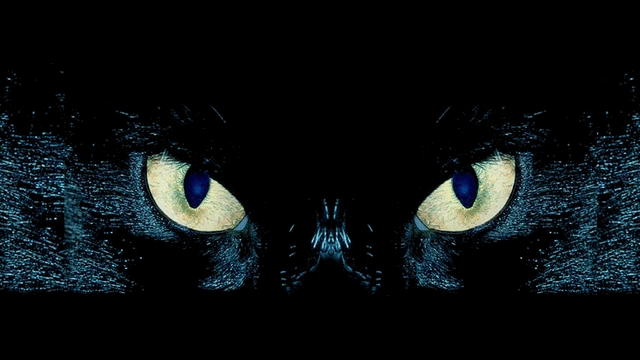
Falling on the retinas in our eyes, there are two images. These two images -- both in 2D (Height and Width. i.e; X and Y axes), are not identical. Our eyes, separated by an interocular distance of about 2.5 inches, take in these two images that have slight differences between them. Our brain distinguishes the spatial separation between individual objects and interprets it as depth (Z axis) ... thus bestowing us with 3D!
This is exactly how our two ears make possible stereophonic hearing for us.
How does 3D Imaging work?
If we present the photograph of a subject to both our eyes, we see it in 2D. Instead, if two photographs of the same subject are taken with an interocular separation and fed discreetly to our individual eyes, our brain can be fooled into thinking that it is seeing a real object - not an image. This is Stereoscopic 3D.
The silver screen and polarized glasses in your cinema theaters, the red & blue prints and anaglyphic glasses
in your books, the intermittent display scans and shutter glasses of your computers ... all of them are there only to make sure that each of your eyes is seeing the particular image meant for that eye.
This is exactly how you listen stereo sound by wearing a set of headphones or a pair of earphones.

Stereo 3D is older than photography!!
The earliest depiction of stereoscope in a painting
“Company of ladies watching stereoscopic photographs”
(1855) by Jacob Spoel
Stereo drawings and Binocular viewers of the 1900s
Even before the advent of photographic chemistry, artists used to draw pairs of stereo images (as seen with two eyes). By mounting the images on stereoscopic lens gadgets, they entertained people to ‘solid looking’ visuals. The fad got a new turn with the arrival of photography. With stereo cameras, the capturing of twin still images became possible.




Stereo Brownie Camera
Hyderabad, India. 1903

Pyramid at Giza 1900

Cutting department B.W.K. Stereoscopic Factory

ViewMaster of the 1960s
This anaglyphic 3D scrapbook is a sentimental possession of the author.
It was with this in 1984 he gathered support from the production & distribution personnel of his film company, to make a 3D film in India.

Given above are some of the memorabilia of 3D enthusiasts and amateur stereographers. Continuing from the dawn of still photography, the fad saw its peak in the 1960s.
The coming of motion picture in early 20th century saw attempts at the cinemas to provide stereo-images to individual eyes ... some of them quite ambitious, to say the least.


The system above is said to have been used in Sewlyn Theatre, New York for The Man from M.A.R.S. 1922 silent science fiction film.
The coming of age for 3D Cinema
It happened in 1952-53 with the release of a few films among which was the 3D classic House of Wax.
This is called the first 3D Boom in Hollywood.

Factors that facilitated in making 3D cinema viable during the 1950s are
(A) manufacture of industrial polorisers, and
(B) locking of dual cinematographic cameras on a beamsplitter mechanical rig.

Dr. Edwin Land of Polaroid. Inventor and innovator
Dual Camera Rigs of the 1950s
(A) Polorisation of light is an optical phenomenon exhibited by certain crystals and chemical solutions. These materials, occurring naturally as minerals, are used for optical experiments in chemical and physical laboratories. It was Dr. Land of Polaroid (while a school dropout, by sneaking into the chemistry lab during the nights for conducting his own experiments) who first manufactured optical polorisers by coating iodine crystals on cellulose acetate sheets. Thus by 1950s polorisers could be made in sheets. Inexpensive poloriser paper glasses could be manufactured to supply patrons in the movie halls.
Now, polorisation of light as a phenomenon, has nothing to do with 3D. Simply that it is used in the exhibition of 3D for coding the images -- left image for the left eye and right image for the right eye. (This is very much the same as coding anaglyphic with red/ cyan color filters). As to why metallic coated ‘silver-screens’ are used in the 3D movie halls is because de-polorisation occurs on non-metallic surfaces (a white plastic screen, for instance). A non-metallic screen would defeat the ‘coding process’.
(B) Beamsplitters are nothing but partially silver-coated (yet optically clear) plain glass plates. A 50/50 beamsplitter reflects 50% of the light incident on it ... and transmits the rest 50%. Generally used in science labs, the beam-splitting technique is adopted for 3D Imaging so as to separate the left/ right images and expose them on to two film strips in two cinematographic cameras. The cameras - recording the images separately for both eyes, are mechanically locked to each other.
Question “How come, beam-splitting is needed ? Wouldn’t two cameras side by side suffice?”
Answer “Because, when placed side by side, the lenses of two cameras wouldn't come anywhere close to the interocular distance (2.5 inches) between the human-eyes. The diameter of a good-quality lens alone would be much higher than this”.
The reflected image (as per convention, the right-eye image) having undergone lateral inversion, has to be ‘flipped’ while printing the film in a laboratory.
In the 1950s, projection of 3D in the movie theaters was done by running the pair of film strips from two interlocked cinema projectors.

Just as the Dual Film Strips ran on two locked Cameras, during exhibition they ran on two interlocked projectors.
In the early 80s came a second 3D boom in Hollywood. This time they made use of a Single 35mm Filmstrip, Over/ Under, Single 3D lens System - a design developed in the 1960s.

The most successful among them was Chris Condon’s Stereovision system - the one we used for filming and exhibiting India’s First 3D film My Dear Kuttichathan/ Chotta Chetan in 1984.

A Stereovision 3D lens would fit onto any regular 35mm cameras of those days. This lens has dual optics within (as in a pair of human eyes, 2.5 inches apart). With prisms, the two images (one for the right eye, one for the left) are stacked one above the other, and cast onto the 35mm film gate.

Magic Show sequence in
Chotta Chetan 3D (1997)


In the cinema halls, the projection of Stereovision single-strip 3D film is done by converging the top/bottom - lefteye/righteye images onto the silver screen with a split/ prism lens in front of the projector.

Balloon song sequence in
My Dear Kuttichathan 3D (1984)
Shot at Navodaya Studios, Kochi.

John Rupkalvis - a Master Stereographer and Condon’s collaborator, designed the stereo reticle (ground glass markings) used in 3D camera viewfinders. It allows the setting of convergence and helps calculate the parallax between the right/left images.

Stereo Reticle for 35mm over/ under symmetric imaging
'Off the Screen' Flower shot in My Dear Kuttichathan 3D (1984)
3D Convergence
Like the Lens Focus, 3D Convergence is a parameter that needs to be followed in shooting S3D. Theoretically speaking, convergence is the point where the axes of the left-eye/ right-eye lenses intersect. Just as you follow-focus when shooting an ordinary film, when shooting 3D you have to also observe follow-convergence. This is to keep the parallaxes between the farthest background & the nearest foreground within recommended limits.

cube to wall. parallax limits
distance +a
distance -b
distance X
stereovision lens converged on the pole
When you set lens convergence at − say; X distance from the lens, then any subject beyond − at distance (X+a) from the lens, is of positive parallax +a. Any subject nearer − at distance (X-b) from the lens, is of negative parallax -b.

Parallax is a displacement or difference in the apparent position of an object viewed along two different lines of sight. Shown here is a simplified illustration of the parallax of an object against a distant background due to a perspective shift. When viewed from "Viewpoint A", the object appears to be in front of the blue square. When the viewpoint is changed to "Viewpoint B", the object appears to have moved in front of the red square. (WIKI)
The maximum value between the far subject (positive parallax) and the near subject (negative parallax) has to be kept within limits to prevent an eyestrain. Follow-convergence is a method to keep extreme parallaxes within admissible limits. Another method is to change the interocular distance - which is possible in dual cameras, but not possible with Stereovision lens. (John Rupkalvis has an invention called Stereoscope where interocular can be changed in a dual lens setup for 35mm camera).
Convergence is also set so as to ‘bring objects into auditorium space’. This so-called ‘off the screen’ or ‘on your face’ effect (in shooting parlance, the term is ‘forced perspective’) is what a layperson would consider as the ‘3D effect’ which provides value for ticket money.


Convergence on screen plane
A schematic representation of how 3D is perceived on the screen
illustration by Narayana Moorthy, Kishkinta.
Technically speaking; once you wear 3D glasses and look at the 3D screen, you do not see the screen-plane at all. The screen becomes a window through which you see 3D. There are objects beyond the window and nearer to you. In theory, the point where the lens-convergence was set becomes the screen plane − the 3D window. Any subject with a positive parallax would appear beyond the window. Any subject with a negative parallax would appear to have come in through the window. (This is in principle. But, as we would come to know, 3D perception is more about how the brain interprets depth-cues ... and therein lie some intangibles of how human brain has evolved over millenniums ... through instances our ancestors have survived, when finding food and evading predators). Stereo window is detailed in chapter 5 of this article.

These are a stereographer’s guidelines to set convergence with Stereovision’s reticule.
When doing Digital 3D Imaging in 1998, we calibrated these for calculations on computer.
During the days of film cinematography, these settings were the only guides to prevent an eyestrain. But today, live monitoring with Digital 3D has made life easier.

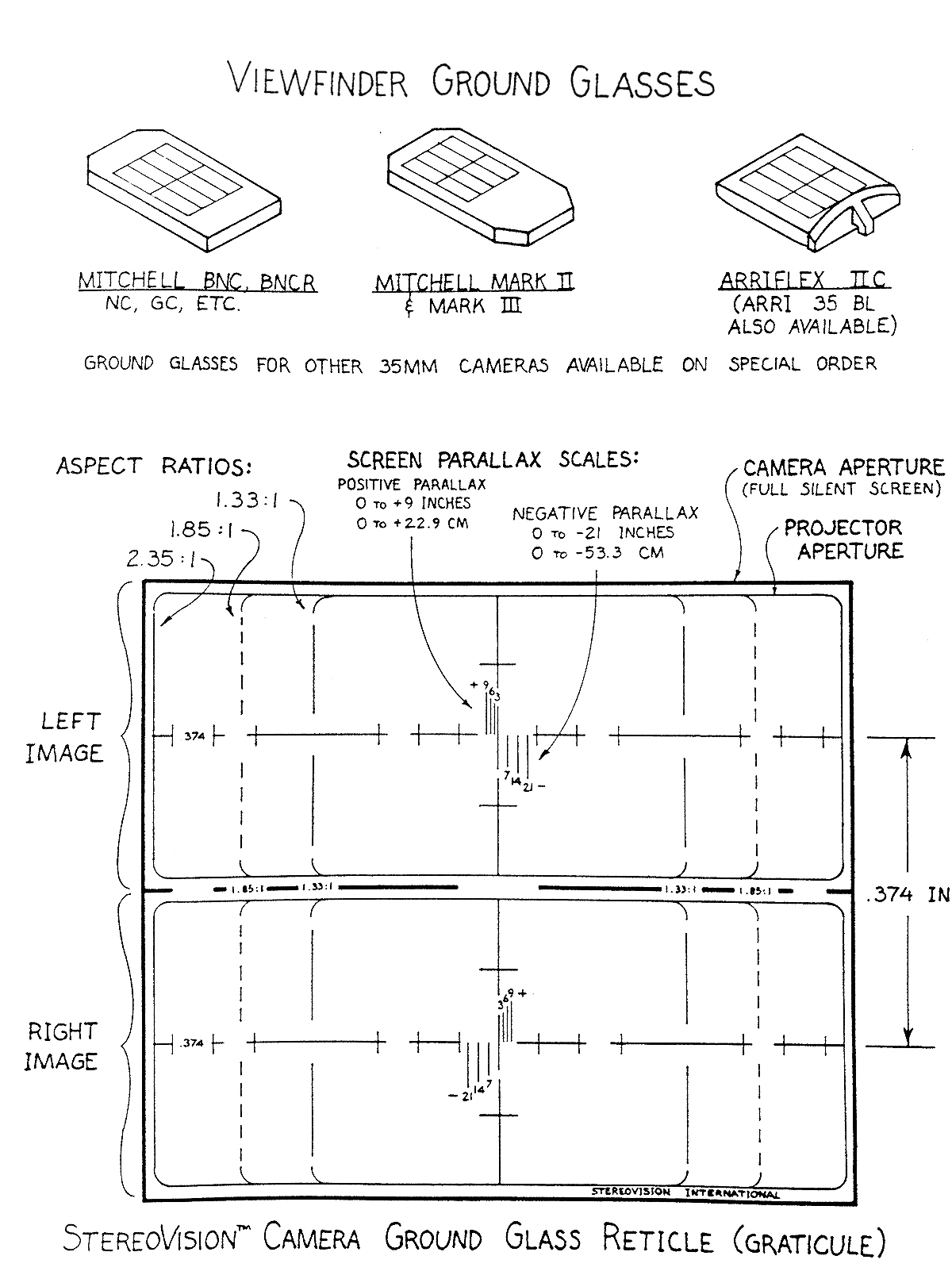
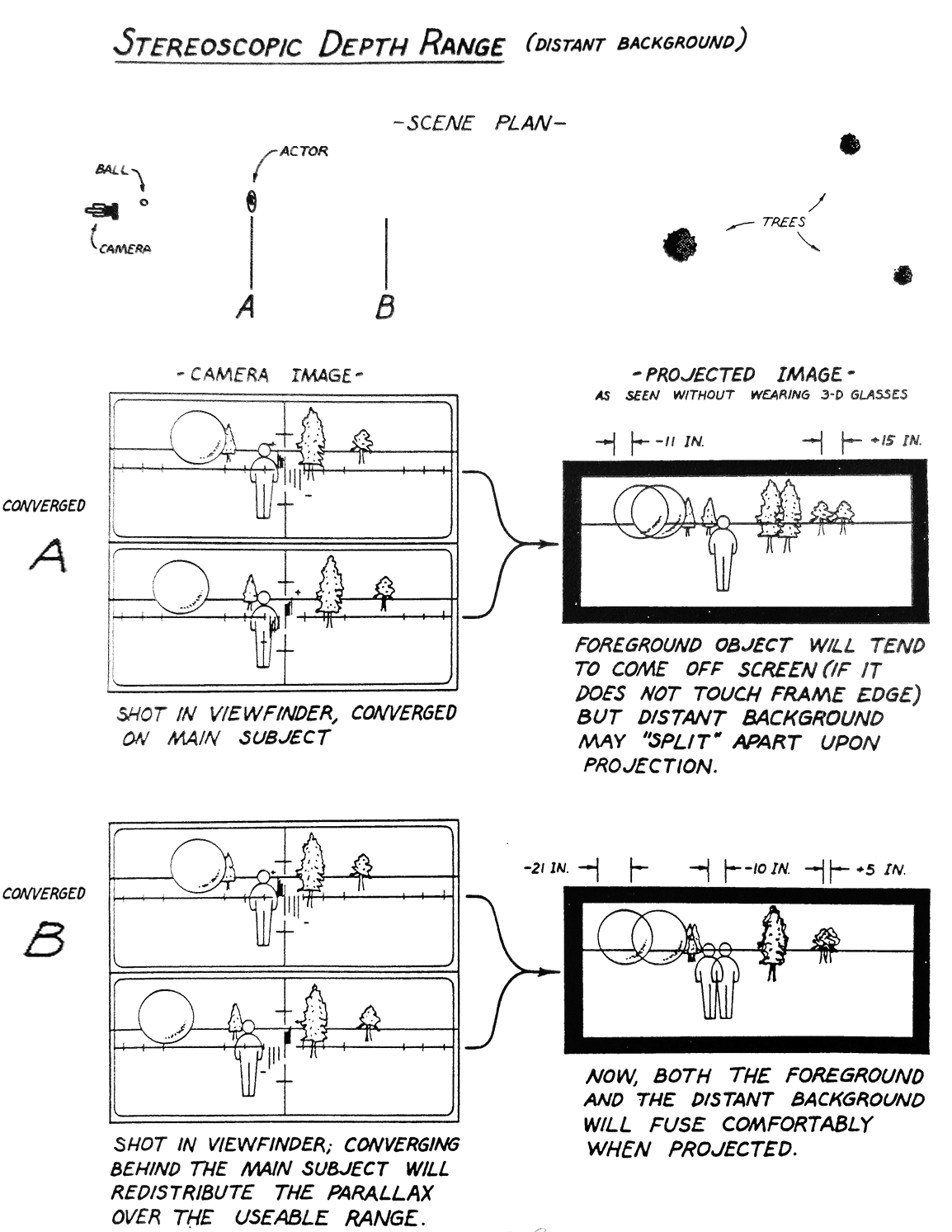
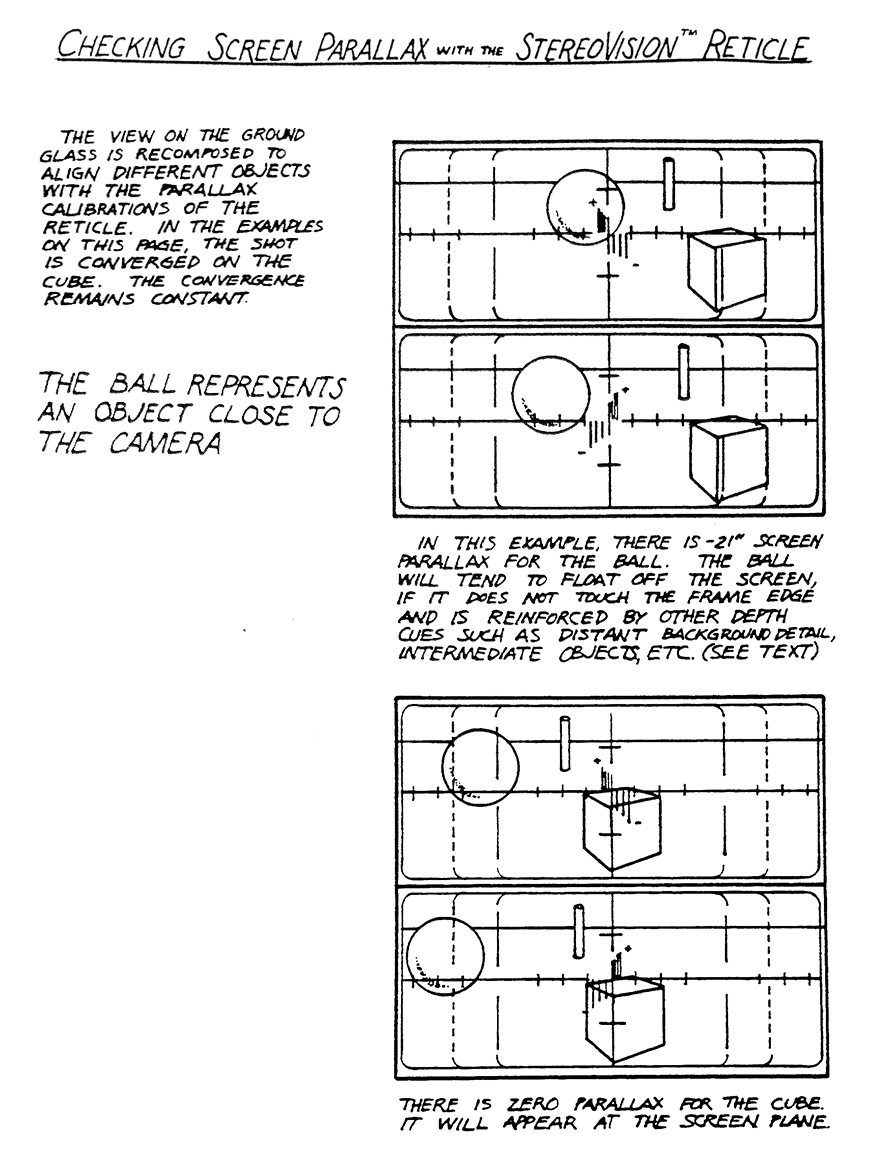

CHAPTER TWO
our 3D know-how, a brief history

1982. revised 1985

This author (myself, Jijo) started understanding 3D imaging with my optical physics textbooks during school and college days. That was on topics such as beamsplitters, polarisation of light, etc. Then came the anaglyphic (red & cyan) comic books, viewmasters, library books and magazine articles on 3D films.
At Burbank CA. in 1983, from Chris Condon and John Rupkalvis, along with Tom Easaw - Line Producer for My Dear Kuttichathan, I learned the science behind stereoscopy. Chris and John took us through their Stereovision 3D Manual and explained to us chapters from Lenny Lipton’s authoritative work Foundations of Stereoscopic Cinema.
While continuing with 3D filmmaking in India, we made our own documents and manuals from the experience garnered with 3D screenings at thousands of cinema halls in India, Malaysia, Arabian Gulf, Indonesia, UK and Canada. Among the theaters were thatched cinema sheds with carbon arc houses ... and also multiplexes with automated platter driven projectors.
Excerpts from Navodaya documents (1985 to 1998)













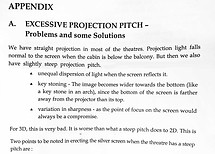
Navodaya Manual
for
3D Screening
Theatre Data
Projector operator instructions (vernacular)
Isco-Stereovision 3D projection lens alignment
Schneider lens calculator - image size, focal length, throw


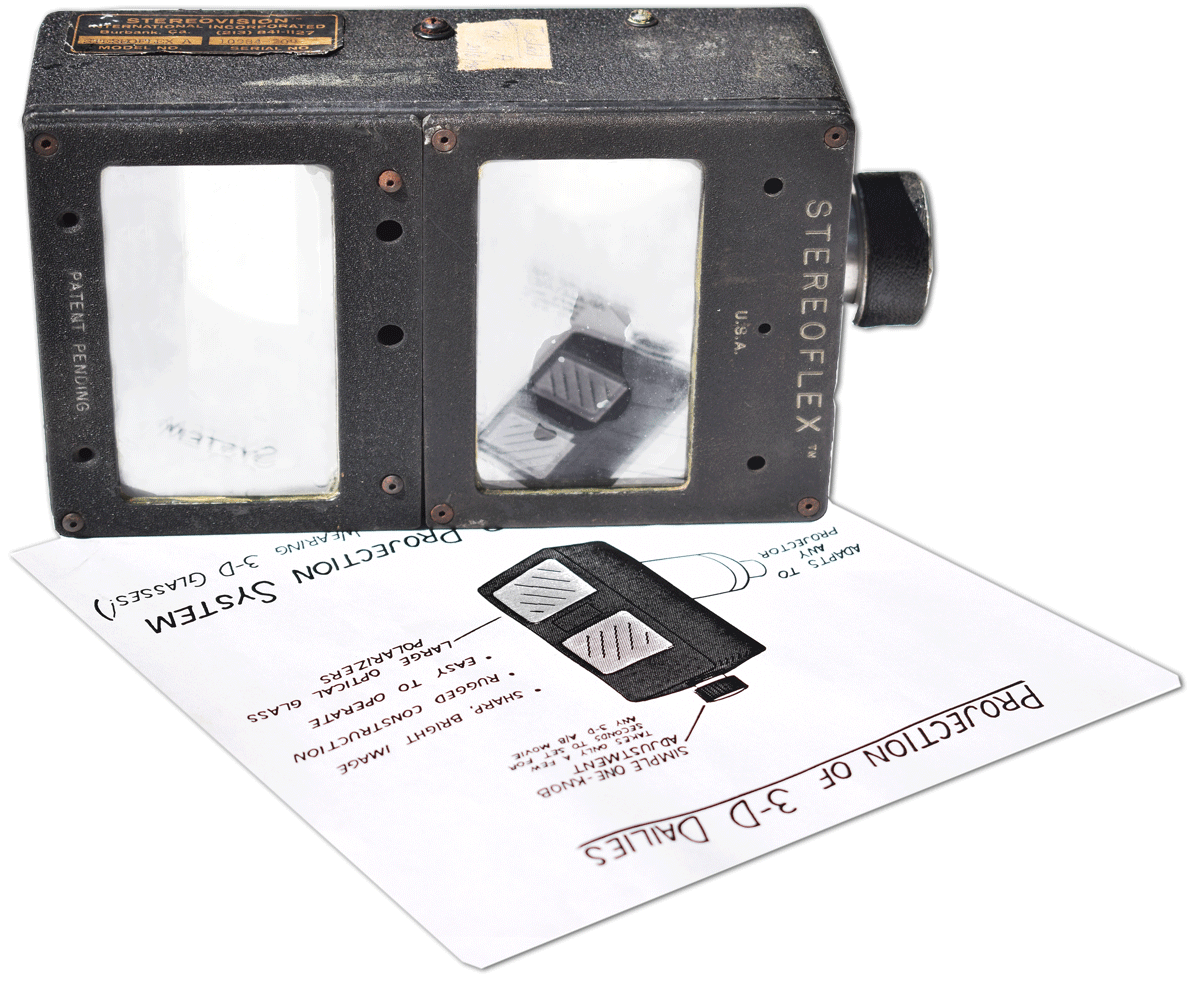


We at Navodaya Studio (our film company) crossed into the era of computers when Desktop Systems came useful for filmmaking. That was in a 1992 meeting at Singapore, when Curt Rawley offered my father Appachan, AVID's first non-linear editing machine to be sold outside the U.S.
In 1997, we started using 3D graphics softwares (3D Max, Autodesk Flame on Silicon Graphics, etc.) to generate stereo images on computer. These were for 3D film titling and C.G. Effects.
Titles for film My Dear Kuttichathan 3D (revised) in 1998.
CG Animation on INFERNO, SG.
Graphics by Arul Murthy, Digital Magic, Chennai.

Film Chotta Chetan 3D (revised 1998)
Magic Show Song sequence.
Shot at Vauhini Studio soundstage, Kodambakkom.


Film Magic Magic 3D (2003) Street Brawl sequence.
Shot at Times Square, NY.


In 2003, we shot live action 3D in Digital and composited them with C.G. animations. This was for Kishkinta (our Amusement Park subsidiary) where 10 minutes 3D snippets are shown.
This was achieved by the design and construction of a Beamsplitter 3D rig that took two identical Digital Cameras. Identical cine lenses were mounted on the cameras.
Digital viewfinder reticules were developed for different aspect ratios.
1920 X 1080 for HD and for Scope (4K).
Thus from 1997 we had slowly moved on to Film-to-Digital and finally to Full-Digital.
Balloon Tsunami Baharathanatyam -
a 3D snippet for KISHKINTA.
3D Animation on 3DMAX & MAYA
Compositing on FUSION
by Sreenivasan, Indian Artists,
Chennai.



STEREVISION 3D MANUAL by CHRIS CONDON & JOHN RUPKALVIS
All Rights Reserved.
No part of these books can be reproduced or transmitted in any form, by any means (electronic, photocopying, recording or otherwise) without the prior permission of the authors.
3D SCREENING MANUAL by JIJO PUNNOOSE
NOTES
Article
on film Kuttichathan
by
Chris Condon
American
Cinematographer
Sept 1985

For us, the introduction to Chris Condon and his Stereovision format had occurred in July 1983 - at the time we were considering selection of a 3D format.
With many 3D formats* having sprouted in Los Angeles (Hollywood) in the previous one decade - most of them untested, some merely conceptual and none with films actually shot in those systems, it was Ramesh Prasad of Prasad Laboratories Madras who put us in touch with Hollywood Film Company and its owner Mr. Carabello for advice.


* Among the many formats I discarded was one suggested by Ramachandra Babu, DoP of my previous film Padayottam 70mm.
When he heard we had plans for a 3D film, Babu-annan sent me an old American Cinematographer Magazine (April 1974 issue) featuring an Anaglyphic 3D System.
This was not full color 3D. And by then we had determined that we should have the latest and the best.

In the month of July 1983 when we first landed in Los Angeles, intimated by Ramesh Prasad, Mr. Carabello sent his personal limousine to take the four of us - my Pappa Appachan, my brother Jose, Thomas Easaw our family friend and Line Producer based in Denver, and myself to Hollywood Film Company's factory and offices in central LA.
Ramesh Prasad was a major client for HFC (Hollywood Film Company) who made film printing machines.
They had recently supplied the 70mm blowup printing machine to Prasad on which my film Padayottam had its 70mm prints taken out.
From his offices, Mr. Carabello the film machinist phoned Mr. Chris Condon the lens maker. Carabello informed his colleague Chris that he was sending over aspiring 3D Filmmakers from India. Chris replied that he had already an appointment with us fixed by Thomas Easaw from Denver.

NOTES CONCLUDED _____________________________________________
End, Chapters 1 & 2
Next,
Chapter 3 - digital 3D